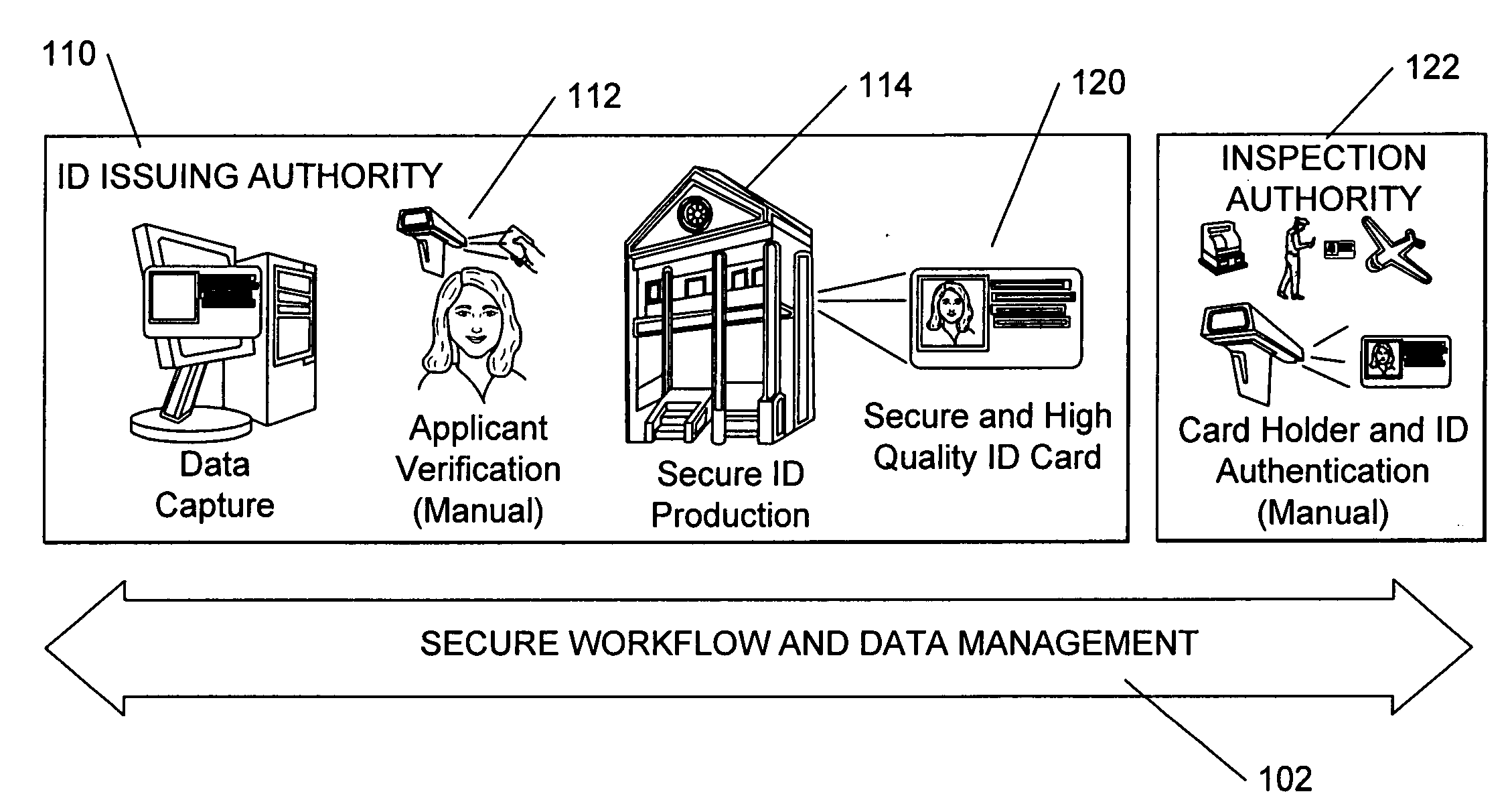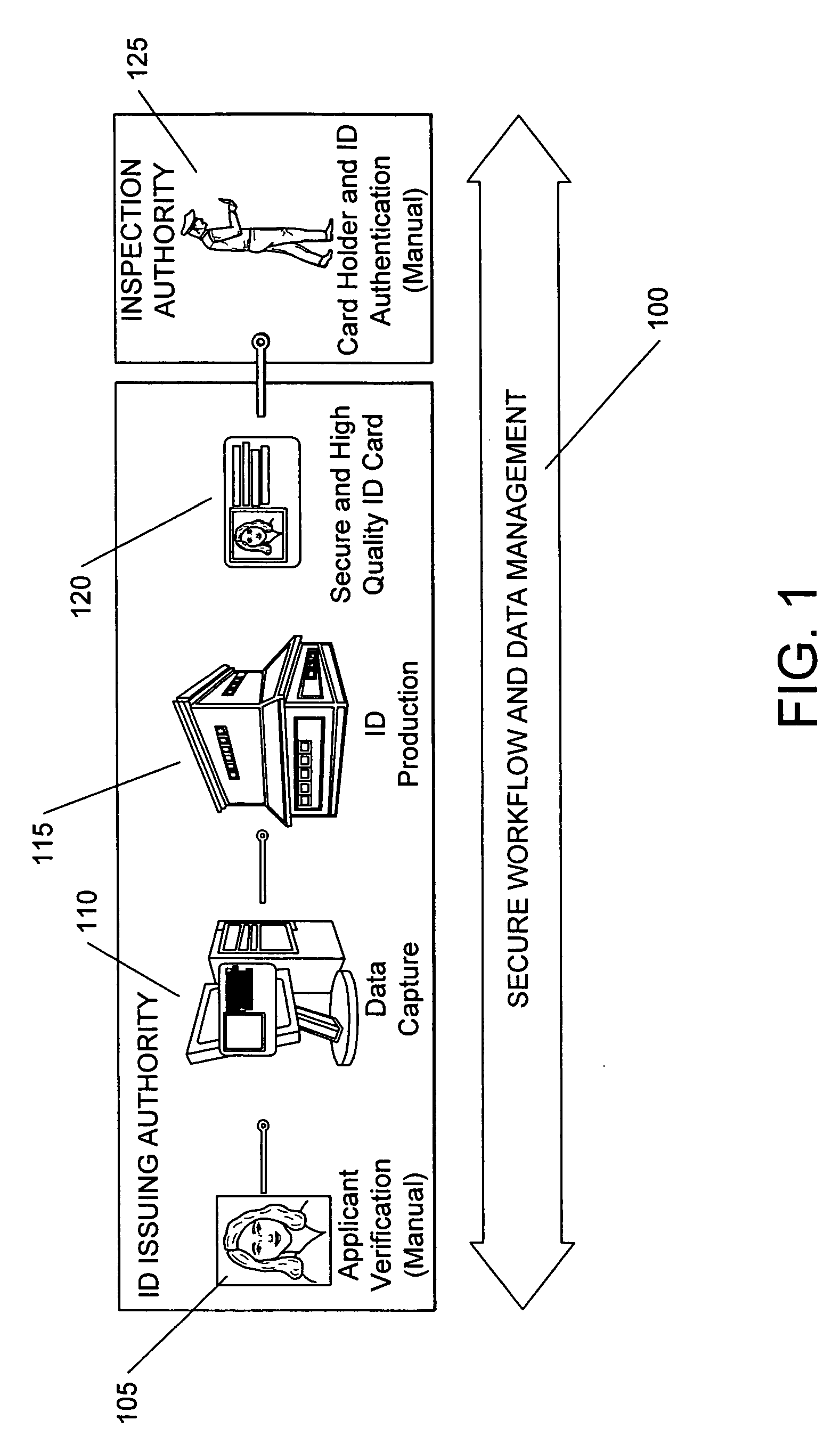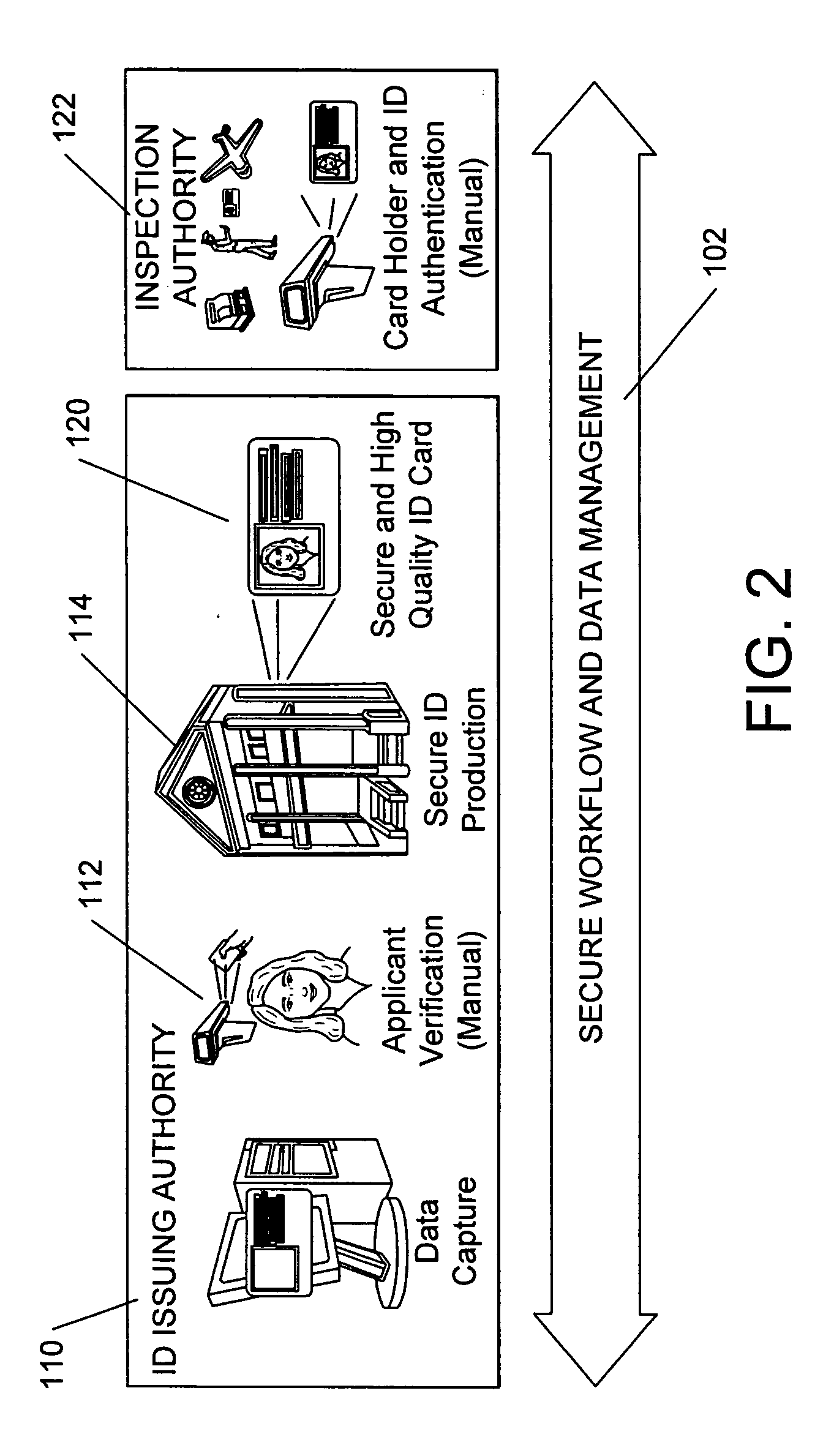Systems and methods for document verification
a document verification and document technology, applied in the field of identification and security documents, can solve the problems of many types of fraud, difficulty in manufacturing without the requisite know-how, equipment and materials, alteration of identification documents and/or counterfeiting of identification documents (and other documents of value), and achieve the effect of enhancing cardholder verification and being easy to add
- Summary
- Abstract
- Description
- Claims
- Application Information
AI Technical Summary
Benefits of technology
Problems solved by technology
Method used
Image
Examples
Embodiment Construction
[0083] Before describing various embodiments of the invention in detail, it is helpful to further explain some terms used herein and explain further some of the environments and applications in which at least some embodiments of the invention can be used.
[0084] Identification Documents and Authentication and Verification of Identification Documents
[0085] In the foregoing discussion, the use of the word “ID document” or “identification document” or “security document” is broadly defined and intended to include all types of ID documents, including (but not limited to), documents, magnetic disks, credit cards, bank cards, phone cards, stored value cards, prepaid cards, smart cards (e.g., cards that include one more semiconductor chips, such as memory devices, microprocessors, and microcontrollers), contact cards, contactless cards, proximity cards (e.g., radio frequency (RFID) cards), passports, driver's licenses, network access cards, employee badges, debit cards, security cards, vi...
PUM
 Login to View More
Login to View More Abstract
Description
Claims
Application Information
 Login to View More
Login to View More - R&D
- Intellectual Property
- Life Sciences
- Materials
- Tech Scout
- Unparalleled Data Quality
- Higher Quality Content
- 60% Fewer Hallucinations
Browse by: Latest US Patents, China's latest patents, Technical Efficacy Thesaurus, Application Domain, Technology Topic, Popular Technical Reports.
© 2025 PatSnap. All rights reserved.Legal|Privacy policy|Modern Slavery Act Transparency Statement|Sitemap|About US| Contact US: help@patsnap.com



